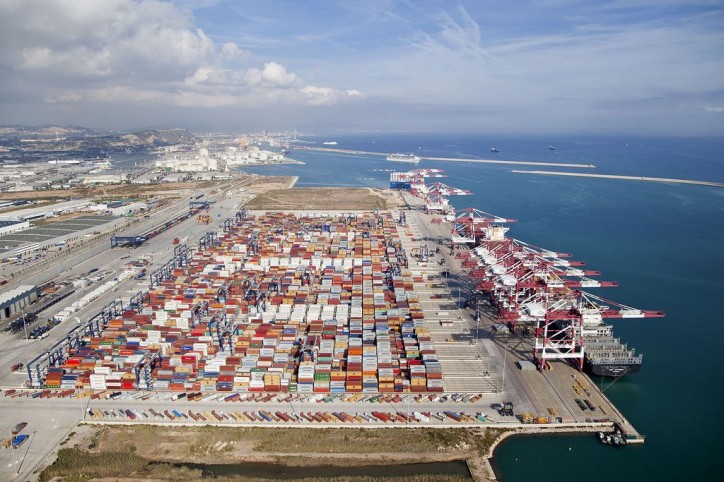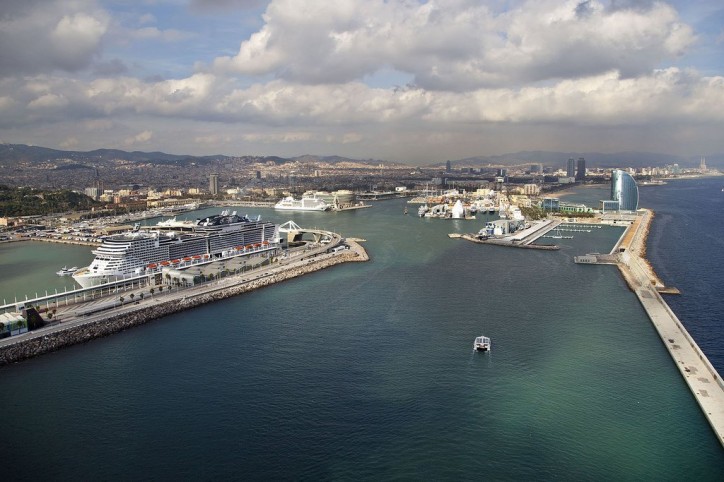The Port of Barcelona closed FY 2018 with record results in the main traffic indicators and reinforces its role as the main facilitator of export activity, aimed at increasingly diversified and further distant markets. The results also confirm the increase in intermodality, with significant growth in rail transport and Motorways of the Sea, helping to boost the sustainability of the logistics chains that pass through the Port of Barcelona.

During financial year 2018, the Catalan infrastructure channelled 67.7 million tonnes of traffic - involving all cargo modes - representing a year-on-year increase of 10% and setting a new record for the Port.
This result was driven largely by the excellent progression in container traffic, the most representative of the surrounding economy, which was over 3.4 million TEU, marking a 15% increase. This growth is even more significant if we take into consideration that it comes on top of the significant increase experienced in 2017 (+32.5%), when Barcelona became the fastest-growing European port.
"Here, we would point to the good results of transhipment containers - unloaded then re-shipped to their final destination -, which increase by 35%. Foreign trade containerised cargo also performed well, particularly exports. Thus, the Port of Barcelona channelled 752,915 export TEU, marking an increase of 6.6% year on year. Imports (580,892 TEU) also increased by 3.5%."
More dynamic markets
While China consolidated its role as the Port's main trading partner (25% of the containers passing through our port start or end in the Asian giant), there is a great diversity of markets that trade goods and products with the Catalan capital. This variety can also be seen among the countries showing greater dynamism in their trade with the Port: Algeria (+45%), the U.S. (+18%), India (+4.4%), Mexico (+12.6%), Vietnam (+27.5%), Thailand (+18.7%) and Egypt (+14%).
In addition to the historical results in total and container traffic, 2018 marked a third record in activity: liquid bulk, with 15.2 million tonnes (mainly hydrocarbons) that grew by 5.2%. By volume, the most important product is natural gas (+3%), followed by gasoline (+12.6%). However, biofuels are the liquid bulk that increased the most (+34.8%).
Meanwhile, dry bulk and vehicles experienced a certain year-on-year fall in activity. At 4.2 million tonnes, dry bulk goods decreased (-4.7%) mainly due to the decline in cement exports.
Furthermore, during financial year 2018 the Port of Barcelona recorded vehicle traffic of 810,218 units, 3% down on the previous year. This result contributed to the decline in imports and, to a lesser extent, that of exports.
More efficient and 'cleaner' logistics chains
The Port of Barcelona also posted record results in terms of intermodality and, specifically, rail transport - both of containers and vehicles that arrive and leave the port area - and the goods transported on the Motorways of the Sea.
On the one hand, in 2018 the Port of Barcelona handled 262.379 TEU of containerised rail transport (+7.7%). This result led to a 13.3% increase in the proportion of Port traffic moved by rail. Rail transport also increased its share for the arrival and departure of vehicles at the port terminals. In total, car transport by rail exceeded 263,900 units (+11%), a result that took the rail share of vehicles to 36.2%. In 2018 the Port of Barcelona's rail services made it possible to avoid emitting a total of 55,200 tonnes of CO2.
The Motorways of the Sea, regular lines connecting Barcelona with various destinations in Italy and North Africa, progressed very positively in 2018, helping to divert nearly 150,000 trucks from the roads to the maritime mode, which is more sustainable in economic and environmental terms. This figure represents an increase of 7% in goods transported by short sea shipping services that regularly connect with ports such as Civitavecchia, Genoa, Savona, Livorno, Porto Torres, Tangier, Algiers and Tunisia.
44% of cruise passengers arrive in low season

During year 2018 the Port of Barcelona received a total of 4.4 million passengers (+8.6%), a figure that marks a new record for the facility. Of these, 1.4 million passengers (+2%) were users of regular ferry lines (with the Balearic Islands, Italy or North Africa), and 3 million were cruise passengers (+12%). It is worth noting the increase experienced in two types of cruise passengers: those in turnaround (starting and ending their route in Barcelona) and those that arrive in low season.
The number of passengers in turnaround, who spend more in the surrounding area, grew by 16%, which is double the growth of those staying only one day on shore (+8%). In addition, the number of cruise passengers arriving during the low season increased by 17% and already account for 44% of cruise passengers visiting the city.
Economic results
In 2018 the Port of Barcelona achieved a net turnover of € 173.5 million, up 4% year on year. Profit stood at € 53.7 million (+8%), while cash flow was € 102.5 million (+4%). This ability to generate resources provides the Port with the capacity to invest.
Source: Port of Barcelona (Additional information about the port at CruiseMapper)